Despite recent temperatures in the 90’s, yesterday our coastal marine layer was so dense that we didn’t see the sun all day. Our daytime high was a mere 64 degrees. A perfect day for weeding!
This year we have hand weeded the orchard so we could best identify which plants are native, and which are not. With the spring bloom season rapidly coming to a halt, we assumed we’d identified the majority of the natives growing on the slope. If for no other reason than the onset of the fire season, it was time to attack our fading cover crop and weeds more seriously, and so the string trimmer made a rare appearance in the orchard.
At the foot of the orchard slope, just barely inside the deer fence, I noticed a delicate pale lavender flower…just as it was flung a few feet away from me by the trimmer. It caught my eye as very little, other than the tar-weeds, is still blooming on this slope. I didn’t recognize this flower, and whatever it was, it had clearly met its demise. I set the trimmer down, and scanned the area for additional plants, but this seemed to be the only one on the entire slope. I felt like such a brute.
I picked up the remnants of the shredded plant and examined it more closely. The delicate bell-shaped flowers were quite charming, and very unique in appearance. As I continued weeding, and beating back the dry brush, I kept my eyes open for more of this plant, hoping to avoid it, at least until I could identify it as a native or intruder. Finally, toward one of the creeks, I found a more substantial colony of plants blooming in moderate shade. I was so relieved that I hadn’t obliterated the only specimens growing here.
With some effort, I managed to identify this plant as native California Harebell, Campanula prenanthoides (syn. Asyneuma prenanthoides).
Although I’d never seen it before, apparently this is a relatively common native summer wildflower in California, found from Monterey county north to southern Oregon, but it seems that relatively little has been written about it.
This species has a preference for cool canyons and shaded slopes, along road-cuts, and on dry forest floor. Flowers emerge from June through September, and are pale lavender blue, appearing in clusters between two to five. Each flower has 5 petals, and 5 sepals.
The style is longer than the petals, and frequently recurved at the distal end.
The leaves are 1-2 cm long, oblong to lanceolate in shape, and coarsely serrated.
Plants can be propagated by division or from seed. Seeds are set between August and October.
Ethnobotanical data is scant for this species, but apparently the underground bulbs were used as a winter and early spring food source by the Costanoan Indians. [1]
It seems that this species, perhaps as it is not particularly showy, is rarely offered for sale through native plant nurseries. Knowing that we can’t easily run out and purchase more of this plant, makes the fact that it’s growing here of its own accord, that much more special. Next time I weed the orchard, perhaps I should leave the string trimmer behind…
——————
[1] Daniel E. Moerman’s Native American Ethnobotanical Database

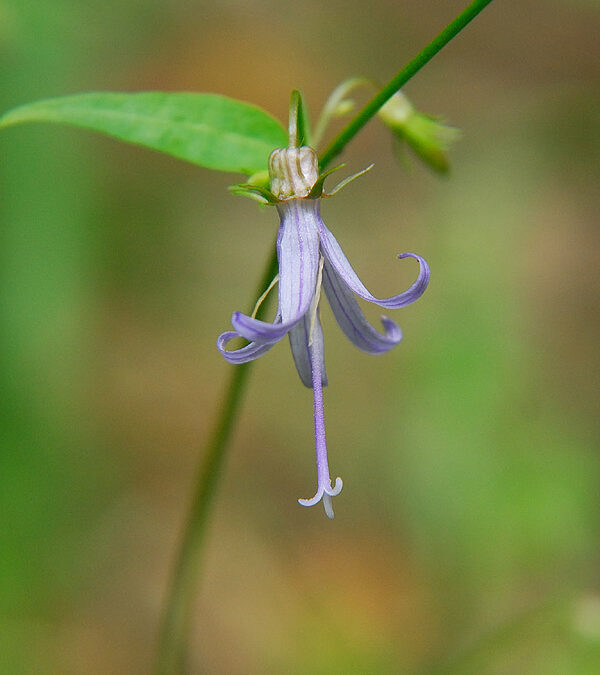
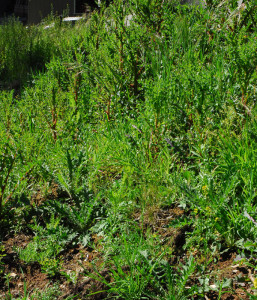

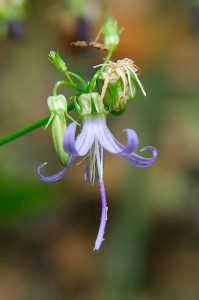
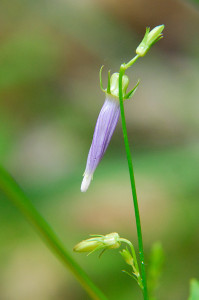


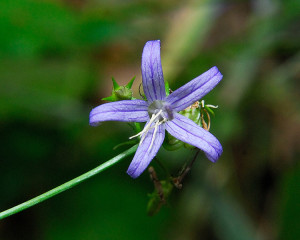
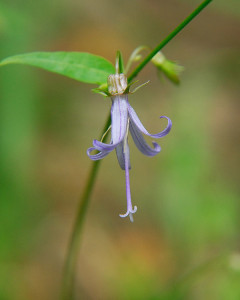
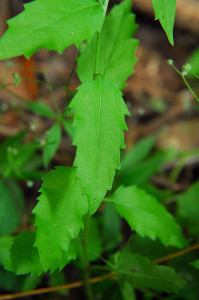








Ooooh, that campanula is a beautiful wildflower! Great shots! I know how you feel, as I always cringe when taking the weedeater to wild beauties. I try to make sure there’s another patch growing somewhere on son’s property before I do it.
Oh, that’s awesome!
Sometimes I think I’m planting all the California Native versions of the Usual Suspects. You are lucky to have this interesting plant on your property.
Beautiful! I’m always amazed by your native plant photos. I thought I knew natives well, but I always learn something new from you.
That is so pretty Clare and I’m glad that as I read on you found a more substantial clump of the little native. I think its long style makes the plant very attractive.
We have a harebell in the UK aswell – I’m on the lookout for it just now along the lade as I’m sure I’ve seen it there in the past but just not sure what month it appears.
Clare, will you let it seed naturally in the garden or will you take some of the seed and sow yourself in a more controlled environment?
I do wonder sometimes how you figure out what species you’re looking at. And then I’m just glad you take the time and have the patience to do your homework and take it slow, Clare.
This one is so tiny and delicate. What a wonder that it chose a space where you will nurture and protect it! So many wouldn’t even notice its existence…
I am afraid that I am guilty of taking out a desired plant, thinking it was a weed. I am glad you found more growing. Such a beautiful flower 🙂